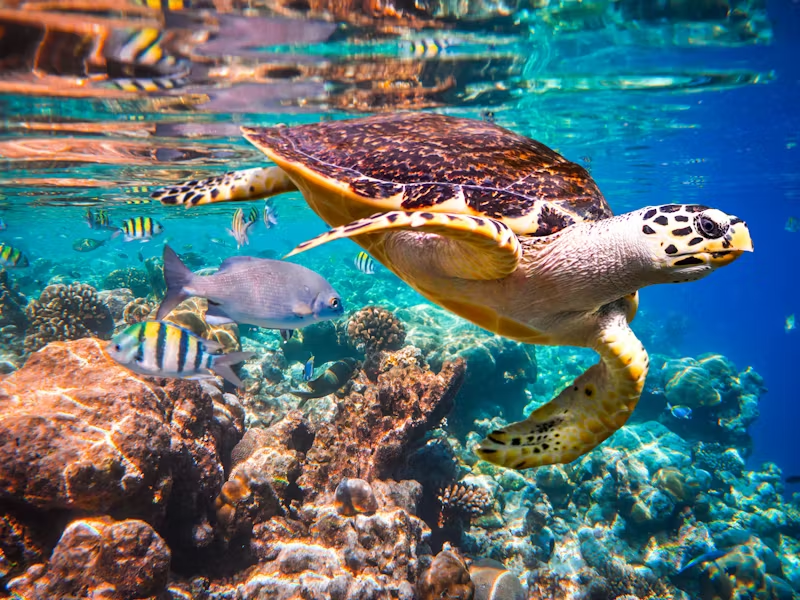Plastic Pollution in the Oceans: A Global Crisis

By Lindah Kiyeng
Introduction
Plastic pollution has emerged as one of the most pressing environmental crises of our time, with profound impacts on marine ecosystems, wildlife, and human health. Each year, millions of tons of plastic waste enter the oceans, threatening the delicate balance of marine life and posing significant challenges for coastal communities around the globe.
The Scale of the Problem
Plastic waste is pervasive in the oceans, with estimates suggesting that over 11 million metric tons enter marine environments annually. This plastic comes from various sources, including land-based activities, such as improper waste disposal and industrial runoff, as well as marine sources like fishing gear and shipping. Once in the ocean, plastic can persist for centuries, breaking down into smaller microplastics that are even harder to remove.

Impact on Marine Life
Marine animals are particularly vulnerable to plastic pollution. Many species, including fish, seabirds, and marine mammals, ingest plastic, mistaking it for food. This ingestion can lead to severe health issues, including starvation, internal injuries, and exposure to toxic chemicals. Additionally, entanglement in plastic debris can cause injury or death to various marine species. The loss of biodiversity not only threatens individual species but can also disrupt entire ecosystems.
Microplastics: A Hidden Threat
Microplastics—tiny plastic particles less than five millimeters in size—pose a significant and insidious threat to marine ecosystems. These particles can be ingested by small marine organisms, which may then enter the food chain, ultimately affecting larger animals and even humans. Studies have found microplastics in seafood, raising concerns about potential health impacts on people who consume contaminated fish and shellfish.
Socioeconomic Consequences
The implications of plastic pollution extend beyond environmental damage. Many coastal communities depend on healthy oceans for their livelihoods through fishing and tourism. The presence of plastic debris can deter tourists and degrade the quality of marine resources, leading to economic losses. Additionally, the cleanup efforts required to address plastic pollution place a significant financial burden on local governments and communities.
Solutions and Strategies
Addressing plastic pollution requires a multifaceted approach. Key strategies include:
- Reducing Plastic Production: Governments and industries must work together to limit the production of single-use plastics and promote sustainable alternatives. Bans on plastic bags and straws, along with incentives for reusable products, can significantly reduce plastic waste.
- Improving Waste Management: Enhancing waste management systems is critical to preventing plastic from entering the ocean. This includes better recycling programs, public education campaigns, and investments in waste collection infrastructure, particularly in developing countries.
- International Cooperation: Plastic pollution is a global issue that transcends borders. International agreements, such as a proposed Global Plastics Treaty, can unify efforts to tackle plastic waste through binding commitments and collaborative actions.
- Public Awareness and Education: Engaging communities through awareness campaigns can empower individuals to reduce plastic use and participate in local cleanup efforts. Education about the impacts of plastic pollution can foster a culture of environmental responsibility.
Conclusion
Plastic pollution in the oceans is a global crisis that demands urgent action. By implementing effective strategies to reduce plastic use, improve waste management, and foster international collaboration, we can protect marine ecosystems and the communities that depend on them. The health of our oceans is intrinsically linked to the well-being of our planet, and addressing plastic pollution is a crucial step toward a sustainable future. Together, we can turn the tide on this pervasive issue and ensure that our oceans remain vibrant and resilient for generations to come.






